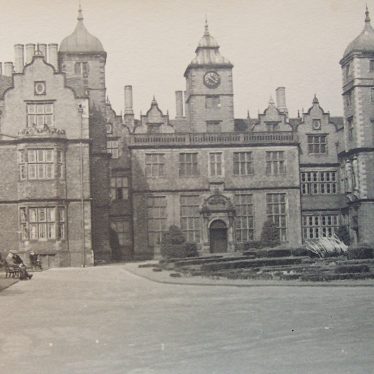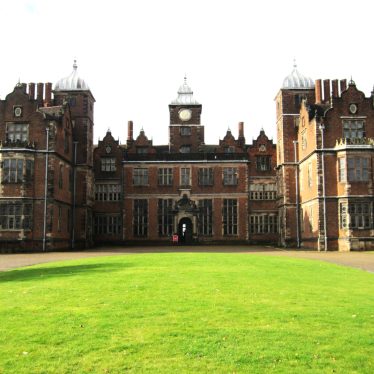Sir Thomas Holte’s family made their fortune in the Birmingham iron trade: he was a royalist who was knighted for supporting James 1 financially. He was the son of a JP and Sheriff of Warwickshire and had the very grand Aston Hall built for him in the early 17th century. He was fined by the Parliamentarians, but enough of his fortune was left for charitable purposes. When he died – aged 83 in 1654 – he left money for almshouses that were built by his grandson, Sir Robert Holte, a year or so later.
Other donors
Later supporters of the almshouse were Dame Alice Holte in the 18th century – who provided funds for nursing and caring for the almspeople, and Mrs Bracebridge (of Aston Hall) who supported the almshouse financially in the 19th century.
The almshouse building
The original almshouse was a single storey row of red-brick, one-roomed cottages that stood in Aston Lane, next to the Vicarage; it cost £300 to build in the mid-seventeenth century. There was a central chapel for daily prayers. Here is a link to an engraved print of the almshouses from 1858. Sadly, this almshouse was demolished in 1930, but new almshouses were built in Erdington that are still in operation today under the auspices of the Holte & Bracebridge Charity.
The residents
The almshouse residents had to come from Aston and surrounding hamlets. They were to be poor, aged and decayed, single, old decrepit, lame, blind or impotent (the latter having a different meaning then). They also had to be pius and sober and could be ejected for disobedience, marrying or begging. Residents were provided with a frieze gown and coals annually. By the 1830s they were receiving a pension of 2s 6d a week plus fuel and a coat or gown annually. Birmingham library has published a nice postcard showing two men sitting outside the old almshouse, one of them smoking a pipe.









Comments
Add a comment about this page